The battles for Karachi
A visual record of a city at war with itself.
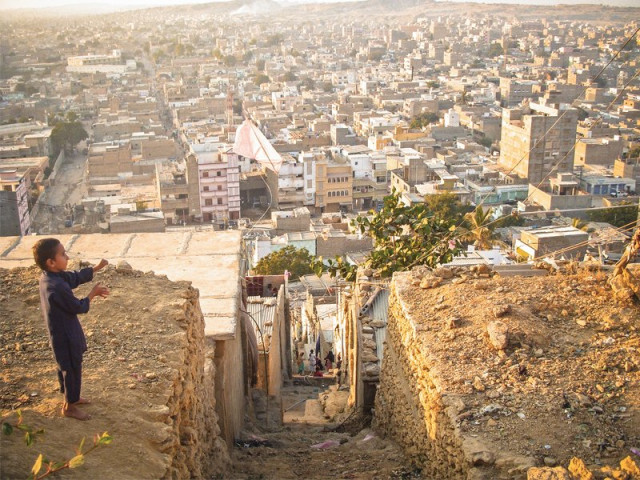

Karachi’s story of civil strife can be traced back to a road accident that cost the life of a Mohajir student in 1985 and led to ethnic riots in Banaras Chowk and its surroundings. SOURCE: NORIA-RESEARCH.COM
Karachi was founded by Hindu traders at the beginning of the 18th century and developed mainly around its port, which anchored the city’s economy and polity to the oceanic trade linking India, East Africa and the Persian Gulf. The route not only opened up Karachi to trade but also to the turbulences of its distant hinterland. During the early 19th century, Karachi became the gateway to Central Asia and weapons shipments and foreign combatants began disembarking on its shore as the clouds of war descended upon Afghanistan.

Lyari is famed for producing boxers such as Hussain Shah who made it to the Olympics and footballers Umar Baloch, Ghulam Abbas and Ustaad Qasim. The Trans-Lyari Boxing Club, in particular, is much anticipated by the under-13s in the neighbourhood. Shown here, one of the many gyms in the neighbourhood where the aspiring athletes practice from 8am and sometimes even skip school. PHOTO: LAURENT GAYER
Since the 1970s, Afghan conflicts have been spilling over into the city, which then became flooded with small arms, hard drugs and battle-hardened refugees. It is in this context that the city’s urban struggles started to revolve around ethnic lines, from the mid-1980s onwards.

Entrance to a colony contested by the Sindhi nationalists of Jiye Sindh Qaumi Mahaz (JSQM) and the Muttahida Qaumi Movement (MQM). The banner above the gate proclaims that the neighbourhood is “Altaf [Hussain]’s Fort”. SOURCE: NORIA-RESEARCH.COM
In recent years, the battles for Karachi have grown increasingly complex. The emergence of new political actors seeking to fill in the vacuum left by the state has added a new dimension to an already complicated landscape.

Clashes between Lyari groups started to make headlines in 2002. The police, pictured here in an armoured personnel carrier, have found it difficult to penetrate and patrol the area. Some of the key figures in this story are Haji Lalu and his son Arshad Pappu and Rehman ‘Dakait’. Add the name of CID police official Chaudhry Aslam to the list as he made Lyari one of his prime targets. Aslam was killed in a bomb attack in January this year. PHOTO: LAURENT GAYER
From 2001 onwards, as I drove, rode and walked across the city, interviewing residents, activists or social workers from all ethnic and ideological backgrounds, I started visually chronicling this history of civil strife. For reasons of safety and comfort, I only carried a small compact camera, which fit well in the front pocket of my qamiz, allowing me to pull it out every now and then.

From political slogans to advertising, the walls of Karachi serve as a canvas. Here a boy cycles past the words “We are peace-loving” scribbled on a wall in Lyari . PHOTO: LAURENT GAYER
The camera became my other notebook, which I used to record the ubiquitous political and religious slogans adorning the walls of the city, the paraphernalia of political parties and the architecture of (in)security marking the boundaries between contested turfs. The primary vocation of these photographs was sociological: they were first and foremost research material complementing my oral and textual sources.

This is the site of what is believed to be the historical graves of Moririo Meerbahar and his six brothers. The graves are said to be 700 years old and Shah Abdul Latif Bhittai wrote many poems on their life story. According to legend, fisherman Obhayo Meerbahar and his seven sons, including Moririo, used to live in Sonmiani, a coastal village about 60km west of Karachi. Obhayo moved his family to Karachi after taxes were imposed on fishing in their village. One day when Moririo’s six brothers went fishing, they did not return as they were eaten by a big fish. Moririo got an iron cage, ropes and a few horses to net the fish. Once they found it, they cut open its body and found his brothers who were buried at a place near the coast now known as Gulbai Chowk. In 2006 they came under threat over the construction of a flyover . PHOTO: LAURENT GAYER
But as these images kept on piling up in my hard-drive, it became obvious that they were telling their own tale, bringing out the dead while capturing vividly the sense of dread and urgency that animates the living in this city which is at war with itself.

The year 2013 was one of the bloodiest for Karachi and fighting in Lyari claimed more than 100 lives. Armed fighters have left their mark in many of its neighbourhoods, as is evidenced by the pockmarked walls of the building pictured here. The women, children and elderly often go for days without access to medical care and groceries if a particular neighbourhood is in lock-down . PHOTO: LAURENT GAYER
Laurent Gayer is a research fellow at the Centre national de la recherche scientifique, currently posted at the Centre d’études et de recherches internationales, Paris. He is working on a book about the armed conflicts and “ordered disorder” that have become the trademark of Karachi, Pakistan’s turbulent megalopolis, over the last three decades.
Published in The Express Tribune, Sunday Magazine, February 9th, 2014.

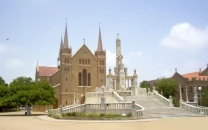
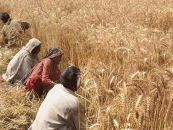
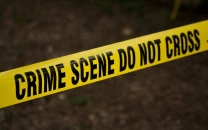
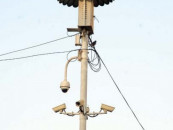

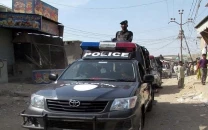












COMMENTS
Comments are moderated and generally will be posted if they are on-topic and not abusive.
For more information, please see our Comments FAQ